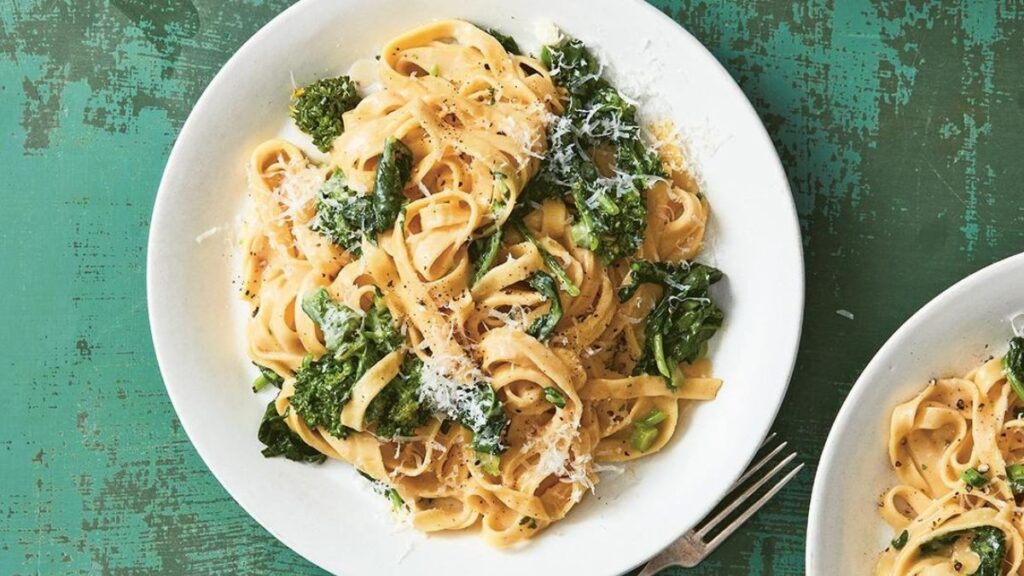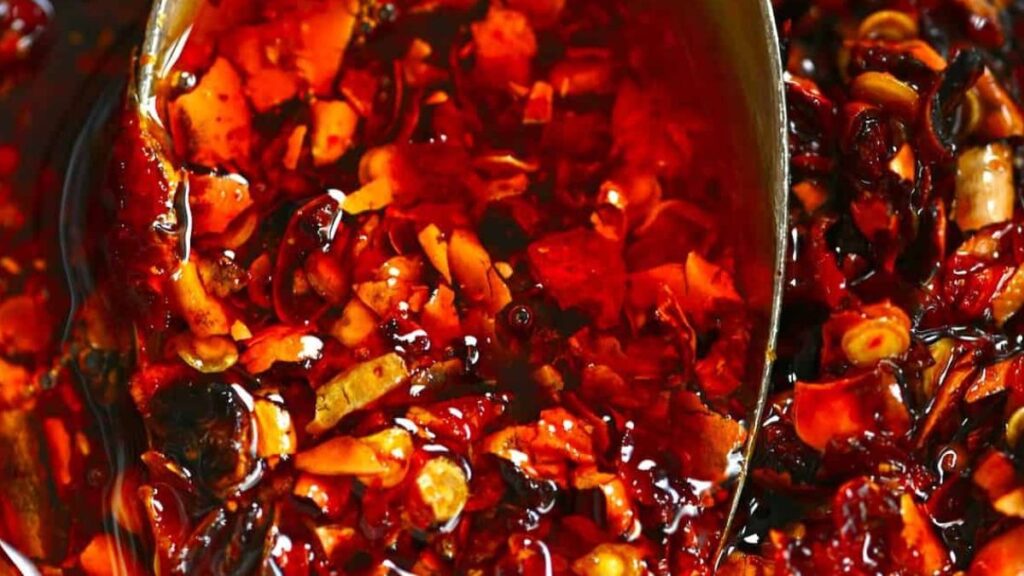Shaanxi Province’s signature dish, you po mian, is a gastronomic masterpiece that will make your mouth wet. Wide wheat noodles, greens, fragrant spices, and a sizzling hot oil drizzle come together in this recipe, also known as “oil sprinkled noodles,” to provide a filling and simple midweek supper. We’ll delve into the enticing tastes of yo po mian and show you how to make this easy yet amazing dish. Come on, then; let’s get started.
1. The Origins of Yo Po Mian
The province of Shaanxi, located in the middle of China’s northwest, is where yo po mian was first created. The cuisine and tastes of this area are well-known for their history and originality. The heated oil is poured over the noodles to increase the scent and flavor, thus the name of the meal. Biang biang noodles, which are flat and torn by hand, are the traditional noodle of choice. However, broad wheat noodles are ideal for a fast and easy weekday supper.

2. The Ingredients You’ll Need
Gather the following items to make a tasty dish of yo po mian:
- Wide wheat noodles (or any dried noodles)
- Bok choy (or other leafy greens)
- Garlic cloves (4, adjust to personal preference)
- Soy sauce (2 teaspoons)
- Black vinegar (1 teaspoon)
- Red-pepper flakes (¼ teaspoon)
- Scallions (chopped)
- Cilantro leaves (a small bundle)
- Cooking oil (for the hot oil drizzle)
You are encouraged to experiment with different proportions and extra ingredients to achieve your desired flavor.
3. Step-by-Step Preparation Guide
Step 1: Boiling the Noodles and Greens
- Put some salt into a big saucepan of water and fill it up. Get it boiling.
- Put the noodles in the pot of boiling water and cook them until they are al dente, as directed on the package.
- Add the bok choy to the noodles 45-60 seconds before they are finished cooking. You may drown the greens by pressing down on them.
- To make the bok choy soft and bright green, cook it for 45-60 seconds.
- Distribute the drained noodles and vegetables into four large dishes.

Step 2: Adding Flavorful Toppings
- Spread the garlic cloves around the four servings of noodles.
- Put two teaspoons of soy sauce and one teaspoon of black vinegar on top of each bowl.
- Add a pinch of red pepper flakes to each serving.
- Each bowl should include some chopped onions and a few cilantro leaves.

Step 3: Infusing the Dish with Hot Oil
- In a small saucepan, bring the oil to a smoky temperature over high heat.
- Use a wooden utensil, such a chopstick or skewer, to feel the temperature of the oil. There should be a healthy froth in the oil.
- Place the garlic and toppings in four separate dishes and carefully pour the heated oil over the top.
- Toss the noodles lightly to ensure they are covered in the fragrant oil.
- Yo po mian is best served as soon as it is prepared.

4. Tips for Customizing Yo Po Mian
- Try switching up the noodles for something else, such udon or rice noodles.
- Mix in some ground Sichuan peppercorns with the red pepper flakes for an added kick of heat.
- Half of the regular soy sauce can be swapped out for black soy sauce to amp up the depth of flavor.
- Add in your preferred toppings to make the meal even more delicious, whether it be sliced mushrooms, shredded chicken, or tofu.
5. Health Benefits of Yo Po Mian
Yo po mian is not only delicious, but also beneficial to your health. Vitamins, minerals, and fiber-rich leafy greens like bok choy are included in the meal. Garlic’s potential immune-boosting qualities and taste enhancement are both enhanced by its modest use. Yo po mian has several health benefits and should be enjoyed as part of a healthy, well-rounded diet.
6. Serving Suggestions and Pairings
Yo po mian may be a complete dinner on its own, but it also goes well with a variety of other dishes. Some potential side dishes are listed below.
- Pickled veggies are a nice accompaniment because of their sour flavor.
- Yo po mian goes well with grilled shrimp or thinly sliced beef to boost the protein content.
- Cool down with an iced tea or other cool drink to complement the spicy food.
Conclusion
Yo po mian is a delectable cuisine hailing from Shaanxi Province in China. This quick and easy noodle dish is packed with flavor thanks to the addition of garlic, chilies, and a splash of hot oil. Create a one-of-a-kind eating experience by tailoring the meal to your preferences. Prepare to have your taste senses tempted by the delicious yo po mmian. Now is the time to give this dish, a delicacy of Shaanxi Province, a try and discover its taste.
Frequently Asked Questions (FAQs)
1. Can I use different types of noodles for yo po mian?
To answer your question, you can use whichever noodles you choose. You may use either rice noodles, udon noodles, or wide wheat noodles.
2. How spicy is yo po mian?
The number of red-pepper flakes used determines how spicy the yo po mian will be. The level of heat may be adjusted to suit individual preferences.
3. Can I add meat or tofu to the dish?
Absolutely! Shredded chicken, beef, or tofu can be added to a bowl of yo po mian for some extra protein and a different texture.
4. Is yo po mian suitable for vegetarians?
By replacing the meat with veggie broth or soy sauce, yo po mian can be enjoyed by vegetarians.
5. Can I make yo po mian in advance and reheat it?
Yo po mian is at its most delicious and satisfying when eaten right after it has been made. The noodles may get mushy if you make it ahead of time and reheat it.











